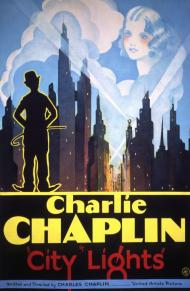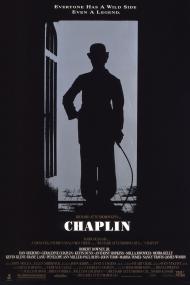Movie Review
The Gold Rush
The Little Tramp Strikes it Rich!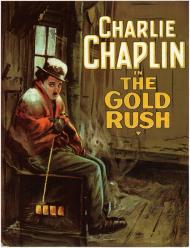
US Release Date: 06-26-1925
Directed by: Charles Chaplin
Starring▸▾
- Charles Chaplin, as
- The Lone Prospector
- Mack Swain, as
- Big Jim McKay
- Tom Murray, as
- Black Larsen
- Henry Bergman, as
- Hank Curtis
- Malcolm Waite, as
- Jack Cameron
- Georgia Hale as
- Georgia
![3.5 star[s] out of 4](http://www.threemoviebuffs.com/static/images/global/featured_gold_stars.png)
![3 star[s] out of 4](http://www.threemoviebuffs.com/static/images/global/featured_gold_stars.png)
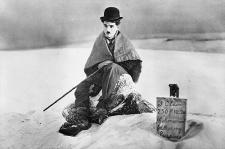
Charlie Chaplin in The Gold Rush.
It is difficult for me to review a silent movie. They were made so long ago that they deserve credit for their originality. Yet I feel I should be fair by not fawning over an old film simply because it is old. Thus is my dilemma with Charlie Chaplin's classic film, The Gold Rush.
Chaplin plays a prospector in Alaska. A storm forces him to seek shelter in a cabin. Two other men end up sharing the cabin with him, Big Jim and Black Larsen. While stranded in the cabin the three men begin to starve. Larsen is sent to find food. What he finds is Big Jim's gold strike and two policemen who are looking for him. He kills the cops but ends up meeting his own demise in an avalanche. Back at the cabin, the tramp cooks his shoe for Big Jim and himself to eat. They end up surviving by killing and eating a bear. After which they part ways.
In a mining town the prospector meets and falls for a dance hall girl named Georgia. Before love can set in, Big Jim shows up and recruits the prospector into heading back out and helping him find his gold claim. They end up finding it and they strike it rich.
The movie ends as these two new multimillionaires are on a steamer heading home. The press is following them to tell their story. One photographer asks the prospector if he can put his Tramp outfit back on for a photo. He does and he ends up running into Georgia. She thinks he is a stow away and tries to hide him. Of course the truth comes out and they live happily ever after.
The Gold Rush has classic film moments. There is the shoe cooking and eating scene. Chaplin winds the shoelace up in his fork as if it is spaghetti. There is also the scene where he puts potato rolls on his forks and makes them dance. I recall watching The Three Stooges once where Curly is at a formal dinner and repeats this scene to an unimpressed dinner party.
Okay, cinematicaly this is a very important movie. It is classic, but I couldn't wait till it was over. It has the sophistication level of a Bugs Bunny cartoon. The effects are poor and the jokes are too old to even be recognized as humor. The one and only prevailing emotion this movie still contains is the unflappable appeal of The Tramp. No other movie character is so easy to root and feel for. Whether he is starving for food or love, The Tramp makes the audience care. It is this movies greatest asset.
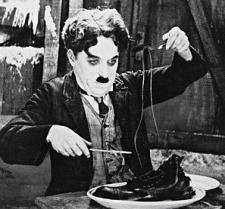
Charlie Chaplin eats his boot in The Gold Rush.
Okay, so the jokes aren't as fresh as they once were, but you are still way too harsh on this film Eric. Some of scenes are still quite funny and others, like the dancing rolls and the boiled boot are still quite entertaining. Maybe it does run a bit long, but to say that you couldn't wait til it was over, is a bit strong.
You do make a good point when you cite the appeal of the Tramp. He elicits more empathy than almost any character in Hollywood history. The scene where he prepares the New Year's Eve dinner and no one shows up for it, really makes you feel for him. It's a testimony to Chaplin's direction and performance. So much of the humor in his films is tinged with sadness.
Some of the jokes could have been trimmed. In fact, when Chaplin reissued the movie in 1942 with added narration, he cut ten minutes for the rerelease. The scene where Big Jim and the Tramp are in the cabin teetering on the edge of the cliff goes on a bit too long, especially considering how close to the end of the movie it is. The middle portion of the movie in the town also runs a bit long with too much happening without the Tramp.
Like you Eric, I don't like giving movie's undue credit just because they're old, but this movie does deserve credit. Historically it's very important. Some of the jokes, like someone being so hungry that they start seeing someone around them as food or thinking someone is saying hi to you but really talking to someone behind you, have been redone so many times that they no longer seem original, but you have to give credit to Chaplin when jokes he created 85 years ago are still being reused.
One thing I have to note is the quality of the film restoration. This was one of the sharpest and cleanest looking silent films that I have ever seen. Each scene and image is crystal clear. It's almost difficult to believe the movie is as old as its.
Even beyond the historical significance of it all, I was still amused, but then I can still laugh at Bugs Bunny cartoons too.
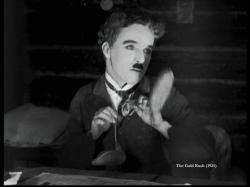
Do movies get any more iconic than this scene?
The Gold Rush marks the second movie that I watched recently that I enjoyed much more on this second viewing than I did the first time I saw it. Vertigo was the other movie. I originally saw them both during the summer of 1998 when my boyfriend and I watched every entry on the AFI’s 100 Greatest American Movies list. For me at least, sometimes a second viewing is necessary to really appreciate the nuances of a film.
The shoe boiling and eating scene is quite simply one of the most classic moments in all of cinema; the Little Tramp’s dinner dance with the rolls being another. How many movies can claim that?
The scenes at the dance hall are quite funny. Scott you mentioned one of my favorite scenes, when Charlie thinks the girl is calling him over but is actually speaking to the man behind him. Sure it has been copied dozens of times but it is how Chaplin reacts in the moment that is as iconic as the gag itself.
Another hilarious - but blink and you miss it gag - happens when Chaplin blocks the doorway to the room that Georgia has entered to get away from Jack’s advances. Chaplin bravely stands his ground until Jack casually lifts his hand to his hat. In an instant Chaplin disappears into the room only to emerge a second later. His timing was exquisite.
It runs only about an hour and a half and yet Eric and Scott both complained about the length. On the contrary it is paced quite briskly for a silent movie from 1925. I too still enjoy Bugs Bunny cartoons but, with the exception of some of the gags, this movie is far more sophisticated - emotionally speaking - than any of that rascally rabbit’s cartoons. The New Year’s Eve scene that Scott mentioned is one obvious example. I don’t recall ever getting a lump in my throat from Bugs.
I would go so far as to call The Gold Rush a masterpiece, second only to City Lights and just ahead of The Kid and Modern Times in a list of Chaplin’s greatest movies. And as Eric mentioned this one even has a happy ending. He not only gets the girl, he gets rich!
Photos © Copyright United Artists (1925)



